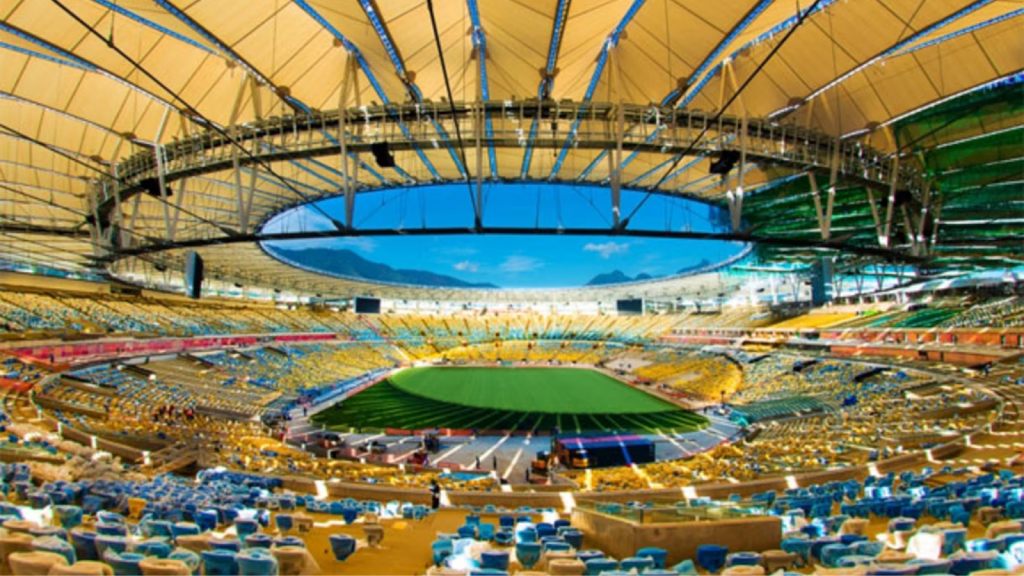
History of the Maracanã Stadium’s Construction and Formation
The Maracanã Stadium, located in Rio de Janeiro, Brazil, is considered one of the most prominent sports venues in the world. Built for the 1950 FIFA World Cup, the Maracanã has become a symbol not only of Brazil but of international football.
The construction of the Maracanã stadium began in 1948 and was completed in 1950, with the goal of serving as the host for the 1950 World Cup. The project cost a significant amount, with an estimated construction cost of 2.5 million US dollars, equivalent to nearly 100 million USD in today’s money. Initially, the stadium had a capacity of up to 200,000 spectators, a record number that remains to this day.
With its modern and state-of-the-art design, the Maracanã made a strong impression, becoming the venue for international matches, especially for major tournaments like the World Cup and the Copa América.
Stadium Location and Capacity
According to RakhoiTV https://www.safagoal.net/ news, the Maracanã stadium is located in the Maracanã neighborhood, one of the most prominent districts of Rio de Janeiro. The stadium’s location is very convenient, close to residential areas and famous tourist attractions, which helps attract millions of visitors and fans every year.
After several renovations, the current capacity of the Maracanã is approximately 78,838 people. Although this number has significantly decreased from its original capacity, the stadium still maintains its role as one of the largest and most famous stadiums in the world. The Maracanã is not just a sports venue but also a cultural icon, beloved and cherished by many Brazilians.
Brilliant Moments in History
The Maracanã Stadium has witnessed many unforgettable historical moments in football. It has been the venue for crucial matches, where football legends like Pelé, Zico, Romário, and Ronaldo have left their mark.
Host of Major Football Events
The Maracanã has hosted several World Cup finals, most notably the memorable 1950 World Cup final between Brazil and Uruguay. This match went down in history with Uruguay’s shocking victory, leaving millions of Brazilians heartbroken. This is one of the most famous matches at the Maracanã, known as “Maracanazo” – a portmanteau of Maracanã and the word “blow.”
See more: https://www.safagoal.net/lich-thi-dau-ligue-1/
In addition to the World Cup, the Maracanã has also hosted other sporting events such as the Copa América, the Confederations Cup, and matches for the Brazilian national team. The stadium is also a venue for major international sporting events, including matches for Flamengo, one of Brazil’s biggest clubs.
Notable Achievements
The Maracanã has seen many great achievements in football history. One of the most notable was the 2014 World Cup final between Germany and Argentina, where the German national team won after a nail-biting match.
Furthermore, the Maracanã has been the site of memorable victories for the Brazilian national team, including the 1958 World Cup final, where Pelé, the legendary Brazilian player, scored in the 5-2 victory over Sweden. This event marked a significant turning point in Pelé’s career and is a part of Brazil’s football heritage.
Conclusion
The Maracanã Stadium is not just a magnificent sports venue but also a cultural symbol of Brazil. From its construction to the present day, the Maracanã has maintained its important place in the history of world football. This stadium has witnessed countless legendary matches, moments of glory for players, and the passion of fans. The Maracanã continues to host major sporting events and is an unmissable destination for anyone who loves football.
Despite undergoing many renovations and changes, the Maracanã has held on to its value as one of the greatest stadiums in the world.
